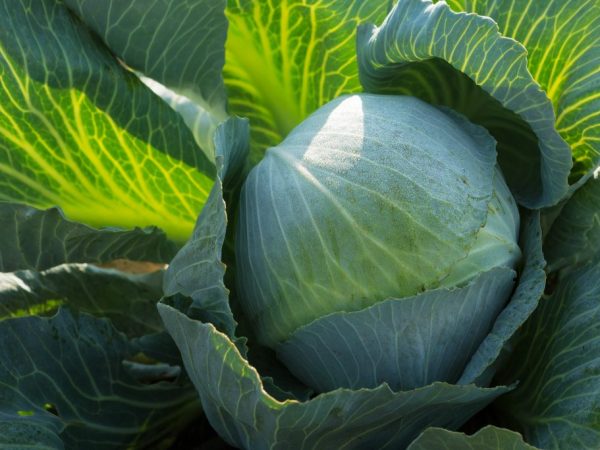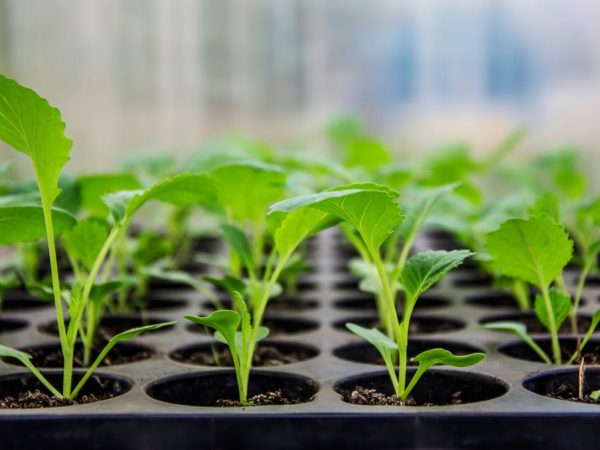Characteristics of cabbage variety Kolya F1
Kohl's cabbage F1 is a new, mid-late, high-yielding hybrid. It was bred by Dutch breeders at the Seminis seed company in the Netherlands. The hybrid is reliable in performance and has proven itself equally well in regions with different types of climate.

Characteristics of cabbage variety Kolya F1
Characteristic
Kolya F1 is a medium late white variety. The ripening period is 130-135 days from the moment the seedlings are planted in open ground.
The ripening period of seedlings is 50-55 days. The average yield per hectare is 370-498, the maximum is 652 c / ha. The variety is resistant to cracking, is immune to bacteriosis, fusarium and thrips. The hybrid is suitable for mechanical cleaning and long-term transportation. Shelf life - up to 10 months.
Description
Cabbage has medium, slightly wavy leaves. The surface of the leaf is slightly bubbly, with a waxy coating. The leaf rosette is raised. The head of cabbage is powerful, with a medium-sized outer stump.
Head structure and description:
- round shape, slightly flattened;
- weight - from 4 to 8 kg;
- light green color;
- the color on the cut is white;
- the internal structure is homogeneous;
- the inner stump is medium.
Application
Cabbage is suitable for fresh consumption, it tolerates heat treatment well (it can be boiled, fried, stewed). Suitable for processing: salting, pickling, canning. Due to its resistance to cracking, ability to long-term storage on the root, excellent presentation, the variety is suitable for sale.
Care
Cultivation of the Kolya F1 hybrid is possible both by seedling and seedling methods (by sowing seeds in open ground). Sowing work for growing seedlings begins from the beginning of March and continues until the last days of April. It takes 50-55 days for the seedlings to fully ripen. Seedlings should be planted in open ground in May-June. Sowing seeds in a seedless way occurs from the beginning of April to the end of May, the first shoots are noticeable after 4-6 days.
Lighting

Seedlings need good lighting
When growing seedlings in early spring, the seedlings do not have enough sunlight. For the normal development of plants, fluorescent lamps are used for 10-12 hours a day. 10-14 days after the appearance of the first shoots, the seedlings are thinned out or picked. This allows the seedlings to receive uniform illumination.
Temperature
The optimum temperature for seedling formation is 15-18 ° C. To prevent the plants from becoming too elongated, they need to provide the following temperature: at night - 6-9 ° C, during the day - 15-17 ° C. It also has a beneficial effect on the development of the root system.
2 weeks before the planned date of transplantation into open ground, the seedlings are gradually prepared for environmental conditions - a hardening process is underway. For the first few days, the plants are provided with fresh air. During the next period, they are taken out into the street for 2 hours, the length of time is increased every day. The last few days, seedlings are not moved indoors.
Watering
Young plants need systematic and moderate watering. The moisture content of the soil is controlled, it does not dry out and excessive moisture. Older plants need more watering. The amount of water and the frequency of irrigation depend on climatic conditions and soil condition, under normal weather conditions, watering is carried out every 5-7 days, in dry periods - every 3 days. Water for irrigation should be warm and settled. Irrigation is carried out in the evening, after the vegetable crops are spud or mulched.
Top dressing
To obtain higher yields, at least 4 dressings are carried out for the entire growing season. This is especially useful during the ripening period of heads of cabbage. Fertilizers for feeding can be organic or mineral. Organics - mullein infusion (1 liter of water and 100 g of manure); wood ash (1 tbsp. per 1 sq. m.). Mineral fertilizers - solutions based on nitrogen, potassium and phosphorus.
Diseases and pests
The Kolya cabbage hybrid has a strong immunity to fusarium, vascular and mucous bacteriosis, and thrips. Diseases that threaten plants - keela, white rot, black leg. Diseased leaves and heads of cabbage are removed to avoid the massive spread of bacterial or fungal diseases. Colloidal sulfur, oxyhom, Abiga-Peak are used for processing vegetable crops. In the fight against harmful insects: cabbage fly, slugs, scoop, leaf beetle and aphids - drugs "Nemabakt", "Fury", "Iskra-M" help.
Conclusion
According to the characteristics, the Kolya F1 variety has a lot of advantages. This variety is universal in use, does not require special care, has high productivity, long shelf life, resistance to some types of diseases. It is suitable for home use and mass production.


